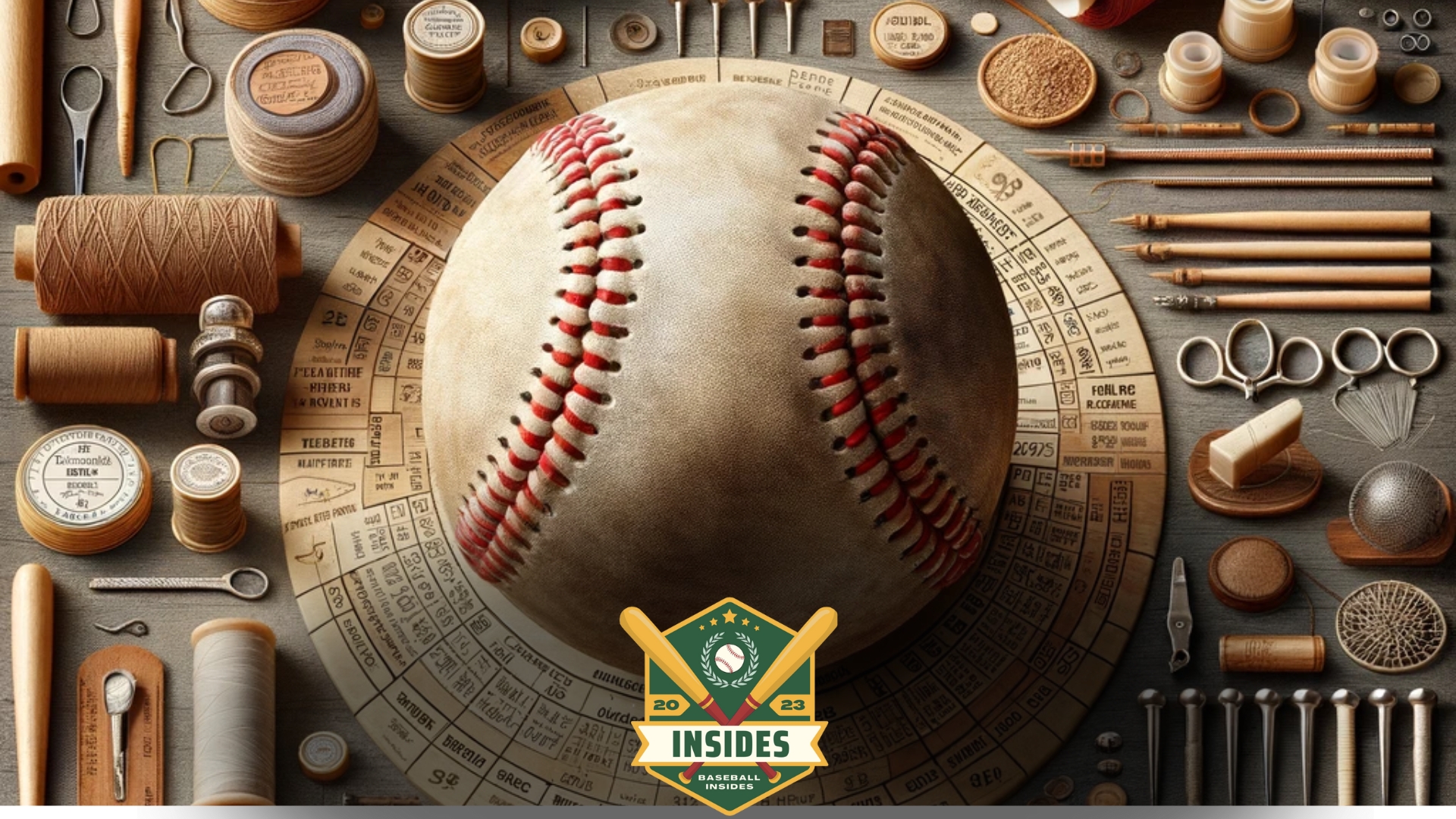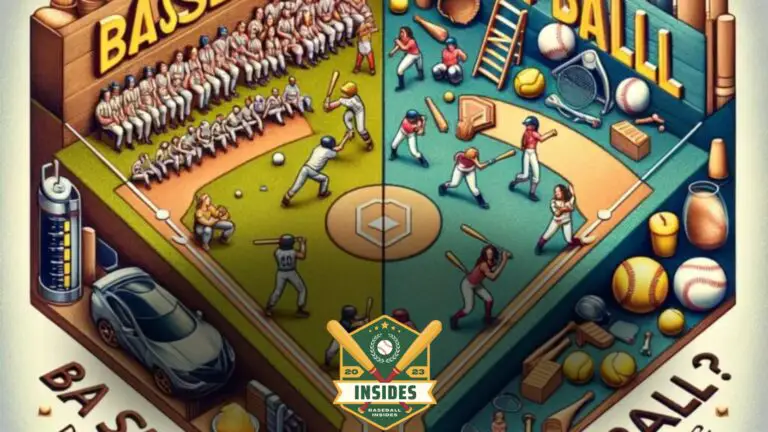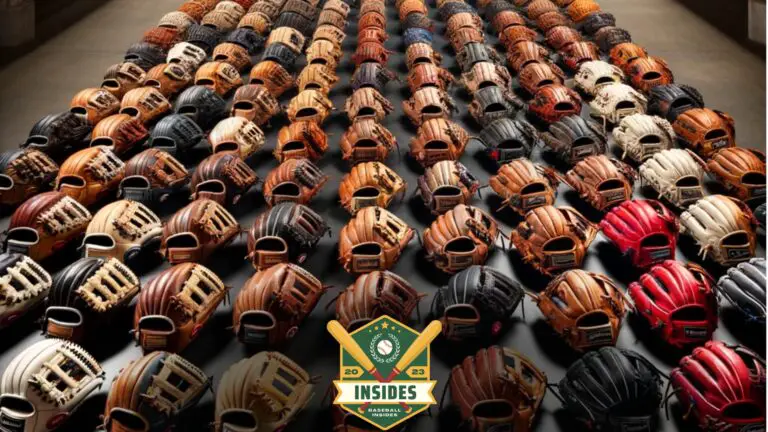
In this article:
Producing a single baseball ranges from approximately $6 to $15. This accounts for materials, labor, and other manufacturing processes.
Baseballs are a fundamental part of America’s pastime, and understanding the economics of their creation is as intriguing as the sport itself.
The production cost for these essential items varies due to factors such as the materials’ quality and where they are manufactured.
Leather, yarn, and rubber or cork centers are the primary materials in a baseball, and skilled labor is required to stitch the leather tightly around the core.
High-quality professional baseballs used in Major League Baseball games tend to be on the higher end of the price spectrum due to their stringent standards.
For casual players, lower-cost options are available that still provide a good experience but at a reduced price, reflecting the variations in production standards and materials used.
Knowing the cost of making a baseball provides insight into the sport’s economics from a grassroots to a professional level.
The Fabric of the Game
Baseball captures the heart of many sports enthusiasts, but the humble baseball often goes unnoticed.
Let’s take a closer look into what goes into creating a baseball. The cost to make these pivotal game pieces can be quite surprising, depending on the materials and processes involved.
Materials Used in Baseball
First, we must unpack the layers that make up a baseball to understand the cost. Each layer plays a crucial role in performance and durability.
Here’s what constitutes a standard baseball:
- Cork – the core, known as the “pill”
- Rubber – encases the cork for resilience
- Wool yarn – wound around the core, impacts the ball’s bounce
- Cotton yarn – the final winding before the leather
- Leather – the outer covering that meets the bat
- Red thread – to stitch the leather tightly in place
Quality and Sourcing Of Leather
The leather cover is vital to a baseball’s integrity. Only top-quality leather ensures a consistent playing experience.
Below are key points on the quality and sourcing of leather:
| Quality Aspect | Details |
|---|---|
| Source | Primarily cowhide, sourced from reputable suppliers. |
| Grain | Full-grain leather is selected for its smooth surface and durability. |
| Tanning | The leather undergoes tanning to receive the iconic white color and texture. |
| Testing | Each leather piece is tested to meet strict standards for major leagues. |
The search for the finest leather translates into a more costly production process. High-quality materials ensure the baseball withstands the rigors of the game.
A combination of durability and performance dictates the overall cost of baseball manufacturing.
Stitching Economics
The essential element distinguishing a high-quality baseball lies in its stitches, the unseen heroes of the game. Stitching does more than bind the leather; it defines the life span and performance of the ball.
Delving into ‘Stitching Economics’, we understand the financial nuances of assembling those pristine white spheres we often take for granted on the diamond.
Stitching is a major player in baseball manufacturing costs. From intricate hand-stitching to precise machine-stitching, each has its own economics.
Let’s unravel these threads to see how they influence the overall cost of making a baseball.
Labor Costs of Hand-stitched Baseballs
Hand-stitching a baseball is a precise art, often done in regions with lower labor costs. Skilled workers meticulously thread 108 double stitches into each ball, which takes about 15 minutes per ball. Due to the labor intensity:
- Skilled labor is a cost driver.
- Each baseball requires personal attention and time.
- Global economics affects labor expenses, as many balls are stitched in countries where craftsmanship comes for a modest price.
Machine Stitching vs. Hand Stitching
Machine stitching has transformed baseball production with higher efficiency and consistency, offering a contrast to the hand-stitched legacy:
| Machine Stitching | Hand Stitching |
|---|---|
| Reduced labor costs | Higher cost, skilled labor |
| Faster production times | Slower, meticulous work |
| Consistency in stitches | Unique character in every ball |
While machines can produce a ball in under five minutes, they lack the human touch vital for premium balls used in professional games.
Different leagues often have preferences, compelling manufacturers to offer both variants.
Production scale, labor dynamics, and quality control are essential factors weighing the decision between hand and machine stitching.
From Raw to Refined
Sports enthusiasts often wonder about the journey of simple baseball, from raw materials to the refined spheres used in the big leagues.
Understanding this transformation reveals the hidden costs tucked away in each pitch.
Let’s explore the art behind creating one of America’s favorite sports equipment.
Processing Raw Materials Into Baseball Components
The secret behind a high-quality baseball starts with its components. Wool, rubber, and leather are the crux of any baseball. These materials undergo meticulous crafting to ensure consistency and longevity.
- Cork: The core starts with a cork that gets layered with rubber.
- Wool Yarn: Next, wool yarn wraps around the core, giving the ball weight and bounce.
- Leather: Finally, white leather, often from cows, is stitched together to form the covering.
Each step always follows strict guidelines to maintain a uniform size and weight. This ensures every ball meets professional standards.
The Role of Technology in Manufacturing
Technology plays a critical role in refining baseball quality. Precise machinery stitches the leather, ensuring each ball is identical.
- Automated Cutting: Machines cut leather covers with exact dimensions.
- CNC Stitching: Computer Numerically Controlled (CNC) devices sew the leather with perfect alignment.
- Quality Control: Advanced scanners check for defects, keeping standards high.
Without modern technology, producing baseballs with such precision would be almost unachievable. This innovation has set a high bar for what teams and fans expect.
Scale of Production
The cost of making baseballs can vary greatly. This depends largely on how many baseballs need producing. We call this the ‘Scale of Production’. Whether it’s a factory churning out thousands or a local shop making a few, costs change.
Let’s dive into the economics of mass and custom baseball production.
Mass Production and Cost Efficiency
Mass production is about making lots quickly and cheaply. Baseballs become cheaper to produce when factories make more. Here’s why:
- Bulk material purchase reduces the cost per unit.
- Automated machinery speeds up the production.
- Skilled workers can produce more baseballs in less time.
- Economies of scale kick in. This means when production goes up, the cost per baseball goes down.
Factories that produce baseballs en masse benefit from these efficiencies, keeping the manufacturing cost per ball low. However, they must invest in expensive equipment first.
Custom and Small Batch Production Costs
Custom baseballs are different. Crafting fewer balls increases costs. Here’s what makes small-batch production pricier:
- Materials often get bought in smaller amounts, so they cost more.
- Each baseball might need hand-stitching, raising labor costs.
- Custom designs require extra work and materials.
Custom shops focus on special orders. They cannot spread costs over many baseballs like large factories. Hence, each custom baseball has a higher price tag.
A Global Comparison
The production cost of baseballs can vary significantly around the world. This depends on material costs, labor rates, and local manufacturing efficiencies.
To understand these costs better, let’s dive into a global comparison, focusing on how these differences shape the baseball industry.
Cost Differences in Various Countries
Baseball manufacturing is not uniform across the globe. Countries with advanced economies may have higher labor and material costs but benefit from more efficient production techniques.
Conversely, labor costs may be lower in countries with emerging economies, yet production might be less efficient due to less advanced technology.
This leads to a broad range of production costs from one country to another.
| Country | Labor Cost | Material Cost | Overall Production Cost |
|---|---|---|---|
| USA | High | High | High |
| China | Low | Medium | Low |
| Dominican Republic | Low | Low | Low |
Importing and Exporting Dynamics
Baseballs are frequently produced in one country and then imported to another for sale. This process adds extra costs, such as shipping, import tariffs, and storage.
These expenses can significantly impact the final price tag compared to the original manufacturing cost.
- Shipping Costs: Longer distances increase fees.
- Import Tariffs: Vary by country and can be quite high.
- Storage: Essential for surplus stock, adding to costs.
Understanding these dynamics helps buyers comprehend why a baseball might cost more in one country than another.
Influence from global market pressures and trade relationships plays a vital role in determining these final costs.
The Price of Play
Baseball: America’s beloved pastime. But behind every pitch, hit, and catch lies a cost few think about—the cost of the baseball itself. Players of all ages step onto the field, often unaware of what goes into making the very ball they throw and hit.
Understanding the expenses provides insight into the game from a different perspective—the price of play.
Retail vs. Production Cost
To begin with, the cost of manufacturing a baseball is far from what enthusiasts pay at stores.
High-quality materials like cork, rubber, yarn, leather, and the labor for stitching contribute to production expenses. Yet, these costs represent just a fraction of the price consumers pay.
| Item | Production Cost | Retail Price |
|---|---|---|
| Baseballs | About $5 | $10 – $20 |
The Markup for the End Consumer
Why the jump in price from production to retail? The answer is markup. Manufacturers and retailers need to earn profits. Therefore, they mark up the price considerably.
This markup covers marketing, distribution, and store overheads. Sponsors and professional leagues may push prices even higher for official game balls.
- Manufacturing cost: Raw materials, labor, shipping
- Retail markup includes: Profits, overheads, marketing
- Additional factors: Licensing fees, brand reputation
Frequently Asked Questions
How Much Does It Cost to Make One Baseball?
Manufacturing one baseball varies between $3 to $6, depending on the materials and labor involved.
How Much Does the MLB Pay for Baseballs?
The MLB spends approximately $5. 5 to $7 per baseball, with annual costs exceeding $10 million for balls used in games and practices.
Does MLB Reuse Baseballs That Hit the Dirt?
MLB does not reuse baseballs that make contact with the dirt. Umpires typically replace these baseballs to ensure the game continues with clean and unscuffed balls.
What Does MLB Do With All the Used Baseballs?
MLB teams typically reuse baseballs for batting practice or donate them to charitable causes. Balls not suitable for gameplay may also go to minor league teams.
What Factors Affect Baseball Manufacturing Costs?
Manufacturing costs for baseballs vary based on materials used, labor expenses, brand, and quantity produced. Bulk orders typically lower the price per unit.
Conclusion
Understanding the cost of manufacturing baseballs offers valuable insight into the sport’s behind-the-scenes operations. As we’ve uncovered, quality materials and labor drive prices.
Whether for professional play or casual games, investing in well-made baseballs enhances the experience. Remember, the right baseball optimizes performance and safety on the field.






